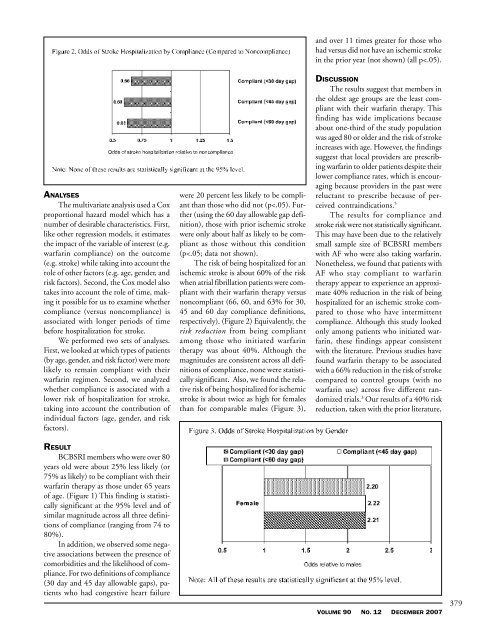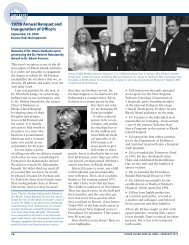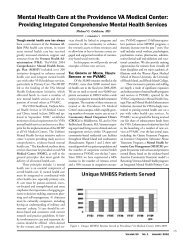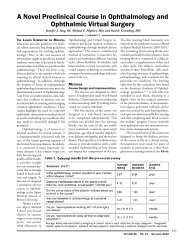The Blue Cross & Blue Shield of RI and Brown University ...
The Blue Cross & Blue Shield of RI and Brown University ...
The Blue Cross & Blue Shield of RI and Brown University ...
You also want an ePaper? Increase the reach of your titles
YUMPU automatically turns print PDFs into web optimized ePapers that Google loves.
ANALYSES<br />
<strong>The</strong> multivariate analysis used a Cox<br />
proportional hazard model which has a<br />
number <strong>of</strong> desirable characteristics. First,<br />
like other regression models, it estimates<br />
the impact <strong>of</strong> the variable <strong>of</strong> interest (e.g.<br />
warfarin compliance) on the outcome<br />
(e.g. stroke) while taking into account the<br />
role <strong>of</strong> other factors (e.g. age, gender, <strong>and</strong><br />
risk factors). Second, the Cox model also<br />
takes into account the role <strong>of</strong> time, making<br />
it possible for us to examine whether<br />
compliance (versus noncompliance) is<br />
associated with longer periods <strong>of</strong> time<br />
before hospitalization for stroke.<br />
We performed two sets <strong>of</strong> analyses.<br />
First, we looked at which types <strong>of</strong> patients<br />
(by age, gender, <strong>and</strong> risk factor) were more<br />
likely to remain compliant with their<br />
warfarin regimen. Second, we analyzed<br />
whether compliance is associated with a<br />
lower risk <strong>of</strong> hospitalization for stroke,<br />
taking into account the contribution <strong>of</strong><br />
individual factors (age, gender, <strong>and</strong> risk<br />
factors).<br />
RESULT<br />
BCBS<strong>RI</strong> members who were over 80<br />
years old were about 25% less likely (or<br />
75% as likely) to be compliant with their<br />
warfarin therapy as those under 65 years<br />
<strong>of</strong> age. (Figure 1) This finding is statistically<br />
significant at the 95% level <strong>and</strong> <strong>of</strong><br />
similar magnitude across all three definitions<br />
<strong>of</strong> compliance (ranging from 74 to<br />
80%).<br />
In addition, we observed some negative<br />
associations between the presence <strong>of</strong><br />
comorbidities <strong>and</strong> the likelihood <strong>of</strong> compliance.<br />
For two definitions <strong>of</strong> compliance<br />
(30 day <strong>and</strong> 45 day allowable gaps), patients<br />
who had congestive heart failure<br />
were 20 percent less likely to be compliant<br />
than those who did not (p

















